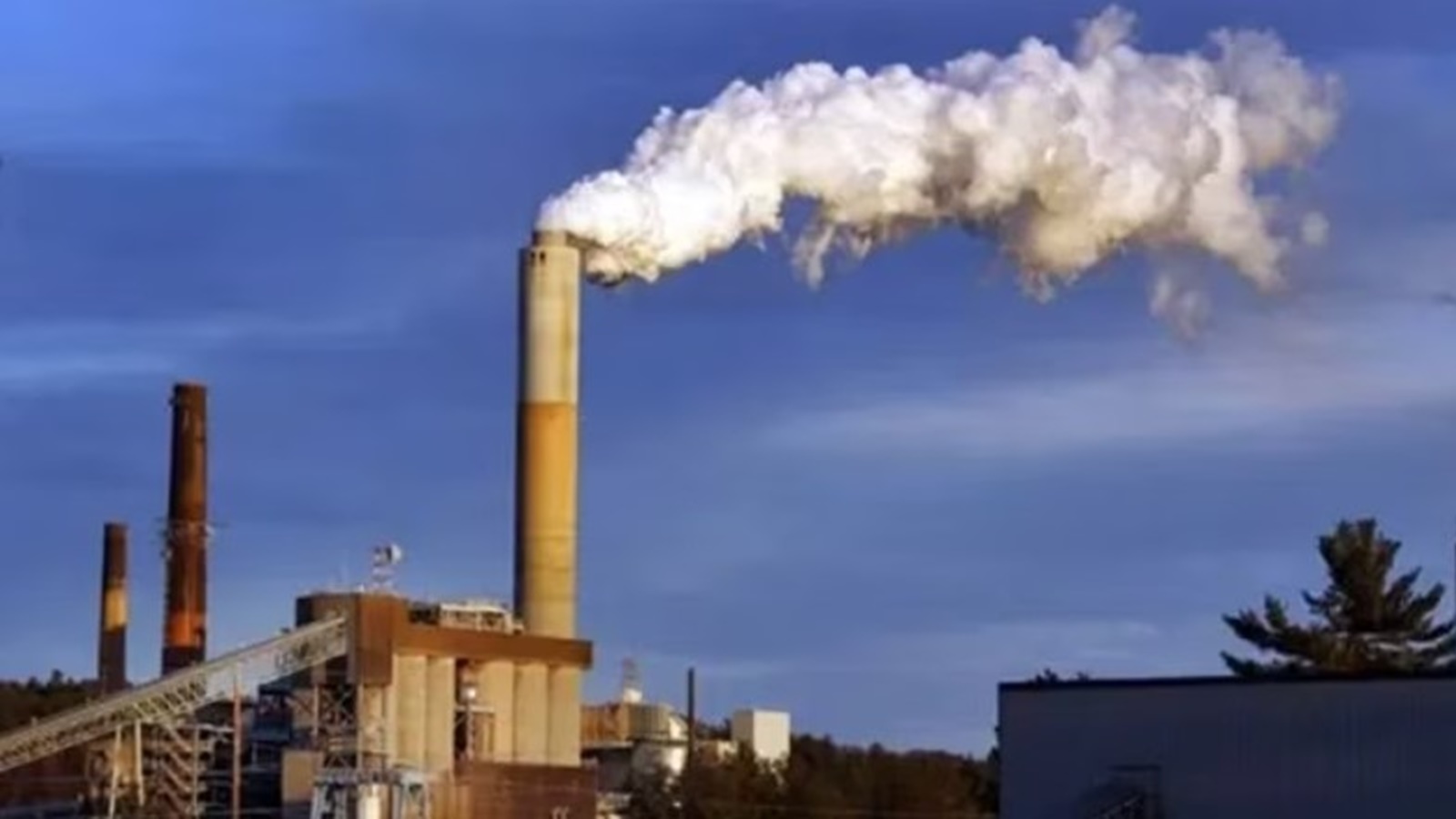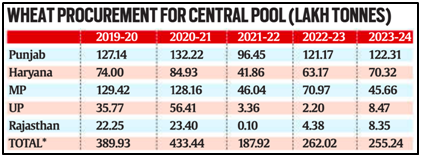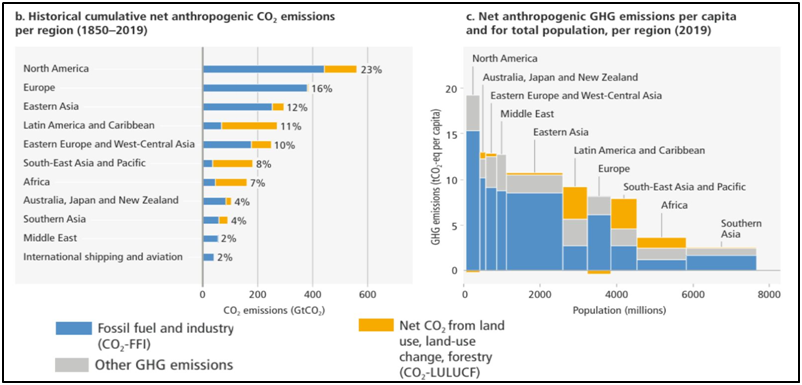Editorials & Articles : 20 May 2024
United Kingdom’s Graduate Route visa (GRV) scheme

Why in news?
- British Prime Minister Rishi Sunak is considering changes to the Graduate Route visa (GRV) scheme. He wants to limit visas to only the best and the brightest students. This change aims to reduce the number of international students coming to the UK. The proposal will particularly target education recruitment agents who provide misleading information to UK colleges and authorities.
What’s in today’s article?
- Popularity of the UK as a Study Destination Among Indians
- Graduate Route visa (GRV) scheme
- Impact of restricting the GRV scheme
Popularity of the UK as a Study Destination Among Indians
- Indians form the largest community of international students in the UK. Recently, there has been a significant increase in student visas granted to Indians.
- According to the UK Home Office, between June 2022 and June 2023, student visas issued to Indians increased by 54%.
- Since June 2019, the number of visas granted to Indian nationals has risen seven-fold.
Graduate Route visa (GRV) scheme
- About
- Introduced by the UK government in July 2021, it is a visa scheme for international students.
- It allows graduates who have completed a degree at a UK higher education provider to stay in the UK to work or look for work for up to two years after completing their studies.
- For those who have completed a PhD, the stay can be up to three years.
- This visa does not require a job offer and provides an opportunity for graduates to gain work experience in the UK.
- Eligibility: This visa is available to international students:
- who have successfully completed a degree at undergraduate level or above at a Higher Education Provider with a track record of compliance; and
- who have a valid Tier 4 or Student visa at the time of application.
- Tier 4 visa in UK is a type of student visa. It is designed for international students who wish to study in UK at a school, college, or university.
- Why do Indians seek GRVs?
- GRV extends an individual’s stay in the UK after education. It allows them to seek employment opportunities and earn well.
- While on a GRV, individuals can also try to get other visas, such as a work visa, by finding a good sponsor or employer.
- Many students from India, especially from Punjab, want to settle in UK. A GRV gives them a gateway to do so.
- It is popular because it allows families to accompany the GRV holder if certain criteria are met.
Impact of restricting the GRV scheme
- On number of international students seeking to study in the UK
- Experts believe the proposal of restricting GRVs could significantly reduce the number of international students seeking to study in the UK.
- It would do so by creating uncertainty regarding post-graduation prospects, and opportunity for a more long-term stay in the country.
- Prospects of average student seeking to study in UK will be hindered
- Financial losses to the universities of UK
- Recently, an independent Migration Advisory Committee (MAC),in its study, said that the GRV scheme should continue as it helps UK universities make up for financial losses on the domestic front.
- UK – a less attractive destination for overseas students
- Experts believe any curtailment of the post-study offer would make the UK less attractive to overseas students, including Indians.
- Rather than the UK, international students will simply prefer a destination which offers more stability post-education.
- This proposal came at a time when other countries such as Canada and Australia have also introduced (or will soon introduce) caps on international students.
- Due to this, the UK was emerging as a top alternative but Sunak’s move has brought in an air of uncertainty.
- Experts believe any curtailment of the post-study offer would make the UK less attractive to overseas students, including Indians.
- Impact on Indian students
- Currently, Indians constitute roughly 42% of GRV holders, again, the highest among all nationalities.
- Indians accounted for 89,200 visas between 2021 and 2023 or 42 per cent of the overall grants,
- Thus, whatever the specific changes may be in the UK’s GRV scheme, Indians will be significantly impacted.
- Currently, Indians constitute roughly 42% of GRV holders, again, the highest among all nationalities.
12 greening projects approved under the Green Credit Program (GCP)

Why in news?
- The Centre has approved 12 greening projects under the Green Credit Program (GCP) and estimates of 24 plans submitted by different state forest departments are under consideration.
What’s in today’s article?
- Green Credit Programme (GCP)
- Green Credit Rules, 2023?
- Implementation of the GCP
- Greening projects approved under GCP
Green Credit Programme (GCP)
- Background
- Green Credit Initiative was launched by the Indian PM on the side-lines of COP 28 (held in 2023 at Dubai, United Arab Emirates).
- It is an initiative within the government’s Lifestyle for Environment (LiFE) movement.
- The concept of LiFE was introduced by the Indian PM at COP26 (Glasgow) in 2021, to drive an international mass movement towards “mindful and deliberate utilisation” to protect and preserve the environment.
- About
- GCP introduces a market-based approach to incentivise 8 identified environmental activities.
- The main objective was to establish a mechanism where participants could earn incentives in the form of ‘Green Credits’.
- It encourages voluntary environmental actions by individuals, organizations, and companies.
- Aim
- The GCP aims to promote sustainable lifestyles and environmental conservation.
- Its goal is to lay an emphasis on sustainability, reduce waste and improve the natural environment.
- Objectives
- To enhance India’s forest and tree cover.
- To Build an inventory of degraded land under the control and management of Forest Departments suitable for plantation.
- To encourage participation of individuals and entities in pro-planet actions by rewarding Green Credits.
- Implementing agency:Indian Council of Forestry Research and Education (ICFRE).
- Sectors targeted
- The proposed GCP will be implemented in phases, with the initial phase focusing on water management and afforestation.
- Subsequent phases will cover activities such as
- Sustainable agriculture,
- Waste management,
- Air pollution reduction,
- Mangrove conservation and restoration,
- Eco mark label development, and
- Sustainable building and infrastructure.
- Compensatory Afforestation and GCP
- GCP allows for the exchange of credits to meet compensatory afforestation (CA) requirements.
- Under CA, industries and government agencies are legally mandated to plant trees on non-forest land equal to the size of forests they cut down.
- GCP allows for the exchange of credits to meet compensatory afforestation (CA) requirements.
Implementation of the GCP:
- Individuals and companies can apply to ICFRE – an autonomous body of the MoEFCC, to pay to restore these forests.
- The actual afforestation will be carried out by State Forest departments.
- Two years after planting and following an evaluation by the ICFRE, each such planted tree could be worth one ‘green credit.’
- These credits can be claimed by the financing organisation and used in two ways:
- Either using it to comply with existing forest laws that require organisations, which divert forest land for non-forestry purposes, to recompense by providing an equivalent amount of land elsewhere.
- Or be used for reporting under environmental, social and governance leadership norms or to meet corporate social responsibility (CSR)
Greening projects approved under GCP
- Approval to 12 projects while 24 others are under consideration
- The Centre has approved 12 greening projects under the GCP. Estimates of 24 plans submitted by different state forest departments are under consideration.
- PSUs being pushed to take a lead
- The government has been pushing the public-sector undertakings (PSUs) to take a lead in registering for the programme, especially in mining heavy states.
- Guidelines for third-party verification: The govt. is developing guidelines for third-party verification of projects under the scheme.
- Implementation so far: Till April 2024, forest departments of 13 States have offered 387 land parcels of degraded forest land – worth nearly 10,983 hectares.
- Those interested in undertaking plantations have to first register on a government portal and the state departments then identify plots.
- A plantation plan and cost estimate are submitted to ICFRE, which clears final proposal.
- Initial focus is on states such as Chhattisgarh, Madhya Pradesh and Odisha, where large forested areas have been diverted for mining.
How Punjab and Haryana are Key to National Food Security?

What’s in Today’s Article?
- Background
- Impact of Climate Change on Production (Impact on Wheat, Rice, etc.)
Background:
- Till the mid-2000s, Punjab and Haryana used to contribute 90% of the wheat in the public distribution system (PDS) and other government programmes.
- In the current marketing season, the two states account for 75.5% of the total wheat procured for the Central foodgrains storage.
- Government agencies have so far bought 25.5 million tonnes (mt) of the 2023-24 winter-sown crop harvested from late-March.
- Of that, 12.2 mt has come from Punjab and over 7 mt from Haryana.
Impact of Climate Change on Production of Cereal:
- In the bumper production years of 2019-20 and 2020-21, when wheat production hit record levels of 39-43 mt, the share of Punjab and Haryana fell to a little over 50%.
- Madhya Pradesh emerged as the biggest wheat producer in 2019-20, overtaking Punjab.
- But this has changed in the last three years, in which production has suffered due to climate shocks.
- Unseasonal heat in March 2022 and heavy rain in March 2023 hit the crop in its final grain-formation and filling stage.
- An unusually warm November-December 2023 has impact wheat yields this year, particularly in Central India.
- The delayed arrival of winter due to El Nino resulted in premature initiation of flowering, and the crop’s vegetative growth phase was cut short.
- The effect was felt most in Madhya Pradesh, Gujarat, Maharashtra, and parts of Rajasthan, where sowing happens early.
Impact on Wheat Producing States:
- Wheat procurement from Madhya Pradesh has crashed from 12.8 mt in 2019-20 and 2020-21 to hardly 4.6 mt this season.
- Uttar Pradesh and Rajasthan too, have posted steep drops from their 2020-21 highs.
- On the other hand, Punjab and Haryana have weathered the climate shocks better, because winters are longer there, and sowing begins in early to mid-November.
- Punjab and Haryana have been the savior at a time when wheat stocks in government godowns, at 7.5 mt on April 1, were the lowest since 2008.
- The stocks were barely above the minimum operational-cum-strategic reserve of 7.46 mt necessary at the start of the marketing season.
Impact on Rice Producing States:
- Earlier, government procurement of rice was traditionally concentrated in Punjab and Haryana, and the Godavari-Krishna and Kaveri deltas of Andhra Pradesh and Tamil Nadu.
- But with new states – Telangana, Chhattisgarh, Odisha and UP – becoming major contributors, the combined share of Punjab and Haryana in total procurement has fallen.
- In early 2000s it was 43-44% but now it has come down to an average of 28.8% in the four years ended 2022-23.
- However, the current crop year has seen that ratio rise to almost 33%.
- One of the key reasons for the growth is the assured access to irrigation which has helped in mitigated the impact of last year’s patchy monsoon.
Implication of Welfare Schemes:
- Under the National Food Security Act, 2013, more than 80 crore people are entitled to 5 kg of wheat or rice per month at highly subsidized rates.
- However, since January 2023, this grain is being provided for free to all NFSA beneficiaries.
- The NFSA, along with other welfare schemes and open market sale operations, require 60-65 mt of grain to be procured annually by state agencies.
- In most years, this requirement is comfortably covered.
Conclusion:
- It is in the times of need, such as bad monsoon or climate shock, Punjab and Haryana prove their worth.
- The national average of per-hectare wheat and paddy production is 3.5 tonnes and 4.1 tonnes, respectively.
- On the other hand, the average of Punjab and Haryana is higher at 4.8 tonnes and 6.5 tonnes for wheat and paddy production, respectively.
- Hence, the two agrarian states will continue to matter for national food security even with some desirable acreage shifts to other crops.
The Evolution and Essentials of India’s Climate Policy

Why in News?
- India is faced with the challenges of sustaining rapid economic growth while dealing with the global threat of climate change. In this context, the article tries to analyse the evolution and essentials of India’s Climate Policy.
What’s in Today’s Article?
- Evolution of India’s Climate Policy
- Key Determinants of India’s Climate Policy
- The Essentials of India’s Climate Policy
Evolution of India’s Climate Policy:
- Over-exploitation by the developed world:
- Climate change has been brought to a crisis stage by the excessive, unsustainable production and consumption patterns of the developed countries.
- Only 16% of the world’s population lives in high-income nations (like the US, EU), however they account for 74% of the excess resource use (between 1970-2017) that exceeds fair share.
- China has also overshot its sustainability limit by 15% of resource overuse.
- Therefore, the high-income countries must reduce resource use by ~70% from existing levels to reach the sustainability range.
- Resource use by the developing world: Over the same period, 58 countries representing 3.6 billion people – including India, Indonesia, Pakistan, Nigeria, and Bangladesh – stayed within their sustainability limits.
- Evolution of India’s Climate Policy:
- India and the world saw significant change in the 1990s, which prompted the creation of new regulations in a number of fields, including the environment.
- The Rio Summit of 1992 saw the emergence of the United Nations Framework Convention on Climate Change (UNFCCC) and the Convention on Biological Diversity (CBD) and Forest Principles.
- The divisions of biodiversity and climate change in India’s former Ministry of Environment and Forests gradually emerged following Rio.
- Since then, India’s climate policy has always been clear, consistent, and coordinated.
Key Determinants of India’s Climate Policy:
- Disturbance in the seasonal cycle:
- India’s civilization and economy have developed in harmony with the seasonal cycle.
- In recent decades, climate change has disrupted this harmony by blurring the distinction between seasons, which has led to increased unpredictability and negative consequences for nature and society.
- Limited land resources:
- In India, the human to land ratio is very low at 0.0021 sq km, and is continuing to recede.
- Therefore, we must learn to survive with this serious limitation, which requires understanding and an integrated management of land and water.
- Extreme weather events:
- The Germanwatch’s Global Climate Risk Index 2020 puts India as the fifth most affected country in terms of experiencing extreme weather events, a sharp rise from its 14th position in 2017.
- By 2050, rising temperatures and shifting patterns of monsoon rainfall might cost India 2.8% of its GDP and lower living conditions of about half of the nation’s population. (WB)
- India’s resolution:
- The logo of the Ministry of Environment, Forest and Climate Change (MoEFCC) – Nature Protects if She is Protected – shows India’s reverence, respect for nature, and its focus towards conserving it.
- Despite having historical cumulative emissions of less than 4% (1850-2019) and 1.9 tonnes CO2 per capita emissions, India has not dissuaded itself from taking resolute domestic and international actions that benefit the planet.
The Essentials of India’s Climate Policy:
- Vision of India’s climate policy:
- Inclusive growth for all-round economic and social development,
- Eradication of poverty,
- Declining carbon budget,
- Firm adherence to the foundational principles of the UNFCCC, and
- Climate-friendly lifestyles.
- Some of the Initiatives at the domestic level:
- The National Action Plan on Climate Change (NAPCC) 2008:
- Its eight missions have laid the ground for understanding climate change and acting on it.
- 34 Indian states and Union Territories have prepared State Action Plans on Climate Change (SAPCCs) consistent with the objectives of NAPCC.
- Adding two more Cs to its climate policy: This addition (confidence and convenient action) signifies the relevance of the slogan of ‘Sabka Saath, Sabka Vikas, Sabka Vishwas, Sabka Prayaas’. For example,
- The Leadership Group for Industry Transition (an initiative of India and Sweden) and
- The ‘Lifestyle for Environment’ movement shows that convenient actions are the only way possible.
- Net zero:
- India demonstrates its support for the multilateral approach to attain net zero emissions by 2070 in its long-term low emissions development strategy submitted to the UNFCCC.
- India has been successfully decoupling its economic growth from greenhouse gas (GHG) emissions.
- This has resulted in a reduction of the emission intensity of its GDP by 33% between 2005 and 2019.
- This is despite having no binding mitigation obligations under the UNFCCC in the pre-2020 period.
- India demonstrates its support for the multilateral approach to attain net zero emissions by 2070 in its long-term low emissions development strategy submitted to the UNFCCC.
- Renewable energy
- India’s solar energy capacity has increased by more than 26 times, and wind energy capacity has more than doubled in the last 10 years.
- It now has the 5th largest installed capacity of wind, and 5th largest solar in the world, achieving a target of 40% installed electric capacity from non-fossil fuels in November 2021 (9 years ahead of schedule).
- India’s solar energy capacity has increased by more than 26 times, and wind energy capacity has more than doubled in the last 10 years.
- The National Action Plan on Climate Change (NAPCC) 2008:
- Initiatives at the global level:
- The CBDR-RC (Common but Differentiated Responsibilities and Respective Capabilities) principle was developed largely through Indian interventions at the Rio Summit, 1992.
- Building global institutions: Such as the International Solar Alliance (ISA), the Coalition for Disaster Resilient Infrastructure (CDRI) and the Global Biofuels Alliance (GBA).






